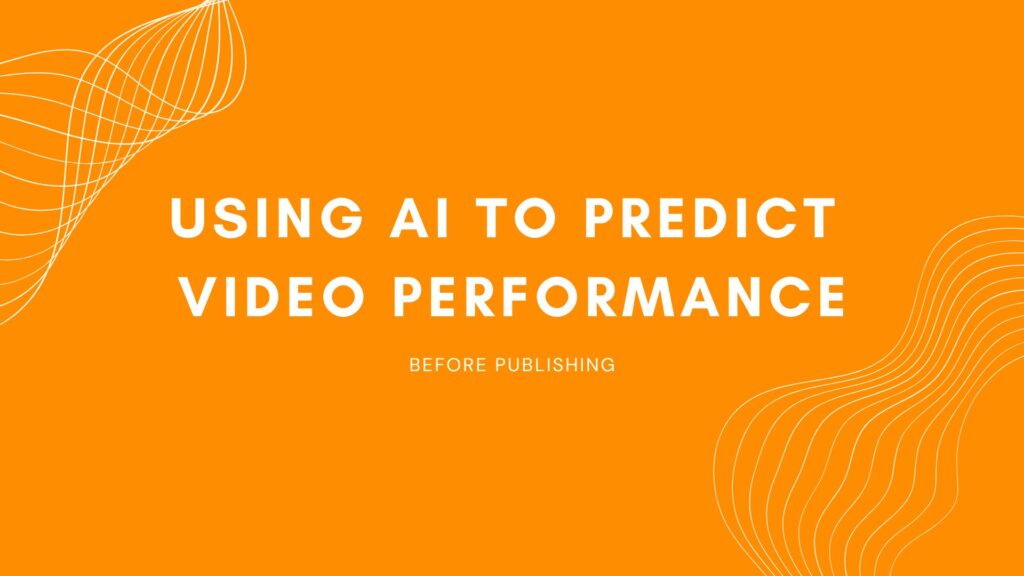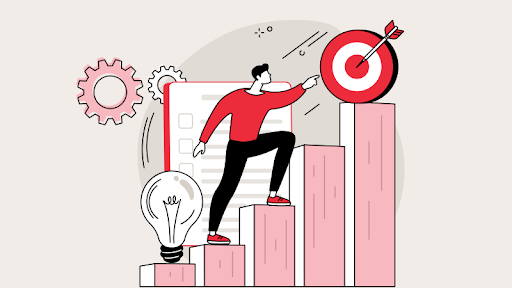Integrating AI to Predict Video Performance Before Publishing

In the fast-paced world of digital content, predicting how a video will perform before it goes live can provide creators, marketers, and brands with a competitive edge. Whether you’re crafting educational videos, promotional content, or entertaining clips, the ability to foresee a video’s performance can help optimise content strategies, save resources, and ensure audience engagement.
One of the most transformative tools for achieving this foresight is Artificial Intelligence (AI). By leveraging AI-powered analytics, content creators can predict video performance with remarkable accuracy, tailoring their efforts to maximise reach and impact. This blog explores how AI can be integrated into the content creation process to predict video performance before publishing.
The Growing Importance of Video Content

Video content has become the cornerstone of digital marketing and online engagement. Research shows that videos are highly effective in driving traffic, boosting conversions, and improving audience retention. According to recent studies:
- Videos generate 1200% more shares than text and image content combined.
- Websites with video content are 53 times more likely to rank on the first page of Google search results.
- 86% of businesses now use video as a marketing tool.
Given these trends, publishing high-performing videos is no longer optional—it’s essential for success in a crowded digital landscape. Yet, not all videos achieve the same level of success. Understanding what makes a video resonate with an audience is where AI can make all the difference.
How AI Predicts Video Performance
AI uses data-driven insights and advanced algorithms to evaluate factors that influence video success. By analysing historical data, audience behaviour, and content features, AI tools can estimate metrics such as views, engagement rates, and shares. Here’s how it works:
1. Analysing Past Performance
AI tools can examine the performance of previous videos, identifying patterns and trends. By analysing factors like video length, thumbnails, titles, and descriptions, AI can determine which elements contribute to higher engagement.
2. Audience Behaviour Modelling
AI systems can segment audiences based on demographics, interests, and viewing habits. By comparing your video to content that has performed well with similar audiences, AI can predict how your target viewers might respond.
3. Content Feature Analysis
AI evaluates visual and auditory elements, such as colour schemes, soundtracks, and pacing, to determine their potential impact. Certain features may resonate more strongly with specific audience groups.
4. Trend Monitoring
AI monitors current trends on social media platforms and search engines. It identifies popular topics, hashtags, and styles, helping you align your video content with what’s currently in demand.
Benefits of Using AI for Video Performance Prediction

Integrating AI into your video production process offers numerous advantages, from improving efficiency to enhancing creative decision-making.
1. Improved Resource Allocation
Predicting video performance allows creators to focus their time, budget, and energy on ideas with the highest potential for success. This reduces wasted effort on videos that might not perform well.
2. Higher Engagement Rates
AI-driven insights help optimise content for maximum audience engagement. From crafting compelling thumbnails to choosing the perfect publishing time, AI ensures your video reaches the right viewers in the right way.
3. Enhanced Audience Targeting
By understanding what your audience likes and dislikes, you can create videos that cater directly to their preferences. This personalised approach fosters stronger connections and loyalty.
4. Data-Driven Decision-Making
AI replaces guesswork with concrete data, enabling more informed decisions. Whether it’s adjusting the video length or refining the script, every choice is backed by predictive analytics.
Key AI Tools for Video Performance Prediction
Several AI-powered tools are available to help creators predict video performance. Here are some of the most effective options:
1. TubeBuddy
TubeBuddy offers advanced analytics for YouTube creators, providing insights into video SEO, optimal keywords, and performance predictions.
2. Vidooly
Vidooly analyses audience behaviour and video trends to deliver actionable insights. It also provides competitor analysis to help you stay ahead in your niche.
3. Wochit
Wochit uses AI to evaluate video content during the creation process, offering suggestions to enhance appeal and predict performance.
4. Google AI Tools
Google’s suite of AI-powered tools, such as Vision AI and Analytics, helps creators analyse content features and audience data to optimise video strategies.
Steps to Integrate AI for Predicting Video Performance
Integrating AI into your workflow doesn’t have to be complicated. Follow these steps to get started:
1. Define Your Goals
Before implementing AI tools, clarify your objectives. Are you looking to boost views, increase engagement, or achieve higher shares? Understanding your priorities will guide your AI strategy.
2. Choose the Right Tool
Select an AI platform that aligns with your goals and technical capabilities. Ensure it integrates seamlessly with your existing tools, such as video editing software and analytics platforms.
3. Collect and Organise Data
AI thrives on data. Gather performance metrics from previous videos, including watch time, click-through rates, and audience feedback. Organise this data to provide a robust foundation for AI analysis.
4. Run Predictive Models
Use your chosen AI tool to analyse the data and generate performance predictions. Review the results carefully, identifying actionable insights for your next video.
5. Test and Refine
Experiment with the suggestions provided by AI. Test different elements, such as thumbnails, titles, and publishing schedules, to refine your strategy based on real-world results.
Challenges in Using AI for Video Performance Prediction
While AI offers significant benefits, it’s important to acknowledge its limitations and challenges:
1. Data Quality
The accuracy of AI predictions depends on the quality and quantity of data. Inconsistent or incomplete data can lead to unreliable results.
2. Over-Reliance on AI
AI should complement—not replace—human creativity. Over-relying on AI may stifle innovation and result in formulaic content.
3. Adapting to Changes
The digital landscape evolves rapidly, and AI tools may struggle to keep up with sudden shifts in trends or audience preferences. Regular updates and human oversight are essential.
4. Cost and Complexity
Some AI platforms can be expensive or require technical expertise to use effectively. Smaller creators may need to balance cost with functionality.
Best Practices for Maximising AI’s Potential
To fully harness AI’s capabilities, consider these best practices:
1. Combine AI with Human Expertise
Blend AI insights with your creative instincts. Use AI as a guide, but let your unique vision shape the final content.
2. Stay Updated on Trends
Regularly update your AI tools and stay informed about emerging trends. This ensures your predictions remain accurate and relevant.
3. Focus on Storytelling
While AI can optimise technical elements, compelling storytelling is still the heart of successful video content. Craft narratives that resonate with your audience.
4. Monitor and Adjust
Continuously monitor video performance post-publishing and adjust your strategy based on the results. AI is most effective when integrated into an iterative process.
The Future of AI in Video Content Creation
As AI technology continues to advance, its role in video content creation is likely to expand. Future innovations may include real-time performance predictions, enhanced personalisation, and deeper insights into viewer emotions. By staying ahead of these developments, creators can unlock even greater opportunities for success.
Conclusion
Integrating AI to predict video performance before publishing is a game-changing strategy for content creators and marketers. By leveraging AI’s data-driven insights, you can optimise your videos for maximum impact, ensuring they reach and resonate with your target audience.
While challenges exist, the benefits far outweigh the drawbacks. From improving engagement rates to streamlining workflows, AI empowers creators to achieve their goals with precision and efficiency. As you embrace this transformative technology, remember to balance AI capabilities with your unique creative vision—because at the end of the day, it’s the human touch that makes content truly memorable.
With AI by your side, predicting video performance becomes less about guesswork and more about informed, strategic action. The result? Videos that not only perform well but also leave a lasting impression on your audience.






